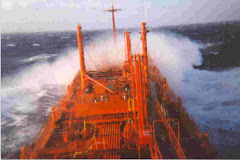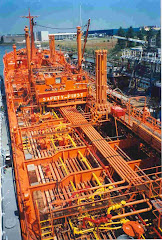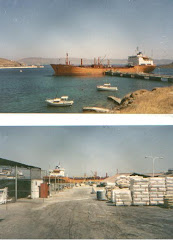Nearly all the shipping investments made this year have been predicated on continuation of double digit Chinese growth ahead to maintain demand and soak up new tonnage coming into the market from the large orderbook overhang. Should Chinese growth rates slow to lower levels, this risks retarding market recovery and the effects of tonnage overcapacity may continue to impact the shipping markets longer than the smart money was counting on.
China reported an October trade surplus of US$ 27 billion Wednesday. This is a very big number. It will be very hard for China to credibly argue that it is trying to contribute to global growth while pulling in more and more foreign demand.
In his latest piece on the impact of QE2 on China, Michael Pettis is projecting growth rates over the next few years in the order of 5-7% if all goes well. He believes that major growth driver in the Chinese development model is low interest rates. He feels that the influx of dollar capital inflows from QE will really test the Chinese capacity to continue to keep their US Dollar peg and keep down domestic interest rates.
The Chinese appear to have thrown the gauntlet to Tim Geithner’s proposal on restricting current account imbalances directly by caps on exports as percentage of GDP, setting the stage for a potential G20 showdown. China is very dependent for its growth on widening trade surplus, and if the surplus was cut by a third in the next year or two, which is what it would take to bring it to under 4% of GDP, it would cause a several percentage point slowdown in Chinese growth, which could only be reversed by another surge in bank-driven investment.
Low interest rates (along with their cousin, socialized credit risk) are the main causes of capital misallocation and excess capacity in China, and are probably also the main forces pushing down household income and household consumption as a share of GDP.
China is very worried about the double impact of a contraction in the trade surplus and the impact of the Fed’s quantitative easing. If the former occurs, it will be almost impossible for Beijing to reduce the impact of the latter without causing a sharp slowdown in growth.
QE2 is fairly explicitly the US countermove in the great global game of beggar-thy-neighbor. It risks creating excessive monetary expansion in China because the PBoC will insist on purchasing all dollar inflows at the exchange rate set by the PBoC and monetizing them. China and other countries are right to claim that QE2 is likely to lead to asset bubbles outside the US, but only, as the US points out, in countries that intervene to prevent dollar depreciation, something the US authorities want to punish and end.
China already is experiencing a liquidity-driven investment boom, and would have already raised interest rates if it weren’t so difficult to do so (many borrowers can barely service debt even at such low interest rates). If the US continues to pursue quantitative easing, it could spell the last stage of China’s great growth spurt followed by the beginning of the big adjustment.
Shipping market expectations started with somewhat of a bang in the first half of the year with the new IPO's and renewal of large block deals. Even the container markets started to turn around with the slow steaming and renewed export volume from head haul routes. Dry bulk took the first hit in the summer with an abrupt fall in rates, for which there has been a fall recovery. Tankers have been dismal and underperformed since last winter with so far a disappointing 4th quarter.
Nearly all shipping investments at present asset price levels have very mediocre investment returns and depend on future reversion to median freight rate levels for satisfactory returns to woo investor money. Everyone in shipping is counting on a gradual recovery in 2011 and they are all citing the China growth story in their investment thesis as a prime demand driver.








